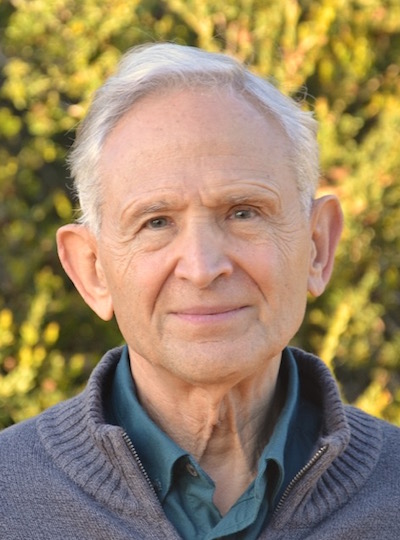Contents
Introduction

Somatic Experiencing: Techniques, Applications, and Effectiveness
Somatic Experiencing (SE) is a therapeutic approach designed to address trauma by focusing on bodily sensations and physiological responses. It helps individuals release the residual effects of trauma by enhancing awareness of these sensations and facilitating the body’s natural healing processes. SE aims to resolve trauma-related symptoms and restore emotional balance through a body-centered approach.
This article examines the underlying principles of Somatic Experiencing, a method aimed at resolving trauma and stress-related challenges. It includes a detailed overview of the techniques used in therapy, their applications, and their impact on emotional and physical well-being.
What is Somatic Experiencing?
Somatic Experiencing (SE) is a therapeutic method designed to address trauma and stress by focusing on the body’s sensations and physiological responses. Developed by Dr. Peter Levine, SE operates on the premise that trauma is stored in the body and manifests through physical and emotional symptoms. The therapy involves tracking bodily sensations, such as tension or discomfort, to help individuals process and release trapped traumatic energy. By increasing awareness of these physical experiences and facilitating the natural healing processes of the body, SE aims to restore emotional balance, reduce distress, and promote overall well-being. This approach empowers individuals to integrate their traumatic experiences in a healthy way, fostering resilience and recovery.
Why is Somatic Experiencing Important?
Somatic Experiencing is crucial because it provides a unique approach to trauma healing that recognizes the body’s central role in storing and processing traumatic experiences. While traditional talk therapies primarily focus on cognitive and emotional aspects of trauma, SE emphasizes the significance of bodily sensations and physical responses. This approach acknowledges that trauma can be stored in the body, leading to physical symptoms and emotional distress.
By integrating body awareness with psychological techniques, SE helps individuals access, process, and release stored trauma, facilitating a deeper and more comprehensive healing process. This can result in significant improvements in emotional regulation, physical well-being, and overall resilience. SE’s focus on the body’s natural healing mechanisms complements and enhances traditional therapeutic methods, offering a holistic approach to trauma recovery.
Techniques Used In Somatic Experiencing
- Pendulation: This technique involves shifting attention between states of discomfort and comfort. It helps clients gradually approach and process traumatic experiences without becoming overwhelmed, improving emotional balance and reducing symptoms of depression and anxiety.
- Titration: This technique involves breaking down traumatic memories or experiences into smaller, manageable pieces. By addressing these small fragments, clients can process trauma-related stress incrementally, which helps in managing anxiety and enhancing emotional resilience.
- Body Scanning: Clients systematically identify and focus on areas of tension or discomfort in the body related to their trauma. This technique helps in releasing trapped trauma and alleviating both physical and emotional symptoms associated with PTSD.
- Targeted Exercises: Clients perform specific exercises aimed at releasing stored traumatic energy and addressing physical manifestations of trauma. This approach aids in reducing PTSD symptoms and improving emotional resilience.
- Tracking Sensations: Clients focus on bodily sensations related to their trauma, observing and processing these feelings to release stored emotional energy. This approach helps manage depressive symptoms by increasing body awareness and promoting emotional balance.
Understanding How Somatic Experiencing Works
Core Idea Somatic Experiencing (SE) is a therapeutic approach designed to address trauma and stress by focusing on bodily sensations and physical responses. The core principle of SE is that trauma is stored in the body, manifesting as physical symptoms and emotional distress. By integrating body awareness with psychological techniques, SE helps individuals process and release stored traumatic energy, facilitating deep emotional and physical healing. This approach allows clients to reconnect with their bodies, understand their trauma responses, and restore a sense of balance and well-being.
Real-Life Example: An individual who has experienced trauma might use Somatic Experiencing to address lingering physical sensations such as muscle tension, stiffness, or discomfort that are related to their traumatic experience. Through SE, the person focuses on these bodily sensations and utilizes therapeutic techniques to process and release the stored trauma. This process can lead to significant improvements in emotional well-being, such as reduced anxiety and depression, and a restored sense of balance and resilience. The individual learns to manage their physical and emotional responses more effectively, leading to a more integrated and harmonious state of being.
Critical Concepts
- Trauma Dynamics and Biological Responses: Somatic Experiencing (SE) is based on understanding how trauma affects the body’s biological responses. Trauma can disrupt the natural healing processes of the body, causing stress responses to become stuck or incomplete. SE focuses on these physical responses and sensations to help resolve the trauma. By addressing these disruptions, SE aids in reestablishing a sense of safety, balance, and control within the body and mind.
- Using Internal Resources: In SE, individuals are encouraged to tap into their personal strengths and positive past experiences to support their healing journey. This might involve recalling times when they felt secure, capable, or resilient. By connecting with these internal resources, individuals can enhance their sense of stability and confidence. This approach helps ground them in their healing process and fosters a sense of empowerment as they address their trauma.
- Understanding Nervous System Regulation: Somatic Experiencing (SE) emphasizes the role of the nervous system in trauma recovery. Trauma often results in the nervous system being stuck in a state of hyperarousal or hypoarousal. SE helps individuals recognize and regulate these states through body awareness and specific exercises, aiming to restore normal functioning and resilience.
- Creating a Safe Therapeutic Space: SE therapists work to establish a safe and supportive environment where clients can explore and process traumatic experiences. This involves creating a space where clients feel secure enough to connect with their bodily sensations and emotions without feeling overwhelmed or retraumatized.
Notable Figures in Somatic Experiencing
Peter Levine: Founder of Somatic Experiencing, Peter Levine developed the approach based on his research into trauma and its effects on the body. His work emphasizes the connection between physical sensations and emotional healing, and he has authored several influential books on the subject, including “Waking the Tiger: Healing Trauma.”
Bessel van der Kolk: Although not a founder of SE, Bessel van der Kolk has significantly influenced the field of trauma therapy. His research on the body’s role in trauma processing and his advocacy for body-oriented therapies align with the principles of Somatic Experiencing.
Pat Ogden: A pioneer in body-oriented therapy, Pat Ogden’s work has parallels with SE. Her development of Sensorimotor Psychotherapy integrates body awareness with trauma processing, contributing to the broader understanding of somatic approaches to trauma.
Janina Fisher: A clinical psychologist known for her contributions to trauma therapy, Janina Fisher’s work often incorporates elements of Somatic Experiencing. Her focus on integrating body-based interventions with traditional therapy has advanced the application of somatic techniques in trauma treatment.
Peter Levine- Image Source: esalen.org

Theories Influenced by Somatic Experiencing
- Cognitive Behavioral Therapy (CBT): SE integrates elements of CBT, such as cognitive restructuring and behavioral techniques, with a focus on body awareness and somatic experiences. This combined approach allows for addressing trauma through both cognitive and physical dimensions, enhancing the therapeutic process by incorporating bodily sensations into the cognitive restructuring and behavioral change.
- Mindfulness-Based Stress Reduction (MBSR): MBSR incorporates SE’s emphasis on body awareness into mindfulness practices. This integration helps individuals manage stress and trauma by fostering a deeper connection to physical sensations and promoting a more mindful approach to emotional and bodily experiences, leading to greater overall stress resilience.
- Gestalt Therapy: Influenced by SE, Gestalt Therapy incorporates body awareness into its practice of exploring emotional experiences. By emphasizing the role of the body in processing and expressing emotions, Gestalt Therapy aligns with SE’s focus on the connection between physical sensations and emotional healing, enriching its therapeutic approach.
- Compassion-Focused Therapy (CFT): CFT incorporates SE principles to enhance self-compassion by focusing on bodily sensations and trauma processing. This approach supports individuals in developing a compassionate understanding of their physical and emotional experiences, fostering healing through a mindful awareness of bodily responses and self-acceptance.
Applications of Somatic Experiencing in Treating Mental Health Disorders

Depression
SE can help manage depression by addressing trauma-related symptoms and improving body awareness. By processing traumatic experiences and releasing stored energy, individuals can experience reductions in depressive symptoms and enhanced emotional well-being.
Example: A client experiencing depression linked to childhood abuse might use SE techniques such as focusing on bodily sensations related to their trauma and using gentle movement exercises to release pent-up emotional energy. This approach helps the client process trauma and develop a greater sense of emotional balance, leading to a reduction in depressive symptoms.
Image Source: calmclinic.com

Anxiety Disorders
SE addresses anxiety by targeting trauma-related stress and promoting body awareness. This approach helps individuals manage anxiety symptoms and improve overall resilience.
Example: A client with anxiety might benefit from SE techniques such as pendulation and titration to process trauma-related stress and develop coping strategies for managing anxiety.
Image Source: shutterstock.com

PTSD
SE is specifically designed to address PTSD symptoms by focusing on bodily sensations and traumatic energy. The therapy helps individuals process and integrate traumatic experiences, leading to reductions in PTSD symptoms and improved functioning.
Example: A client with PTSD from experiencing combat might use SE techniques such as body scanning to identify areas of tension and release trapped trauma through targeted exercises. This helps the client process the physical and emotional impacts of their trauma, leading to improved emotional resilience and reduced PTSD symptoms.
Image Source: news.uthscsa.edu
Common Myths of Somatic Experiencing
| Myth | Reality |
| SE is only for individuals with severe trauma. | SE can benefit individuals with a range of trauma experiences, including mild to moderate stress or trauma. It’s a versatile approach applicable to various levels of trauma. |
| SE focuses solely on physical sensations and ignores emotional aspects. | SE integrates both physical sensations and emotional experiences, addressing how trauma affects the body and mind. It aims to process both physical and emotional dimensions of trauma. |
| SE requires clients to relive their traumatic experiences in detail. | SE emphasizes processing trauma through bodily sensations and gradual exposure rather than detailed recounting of traumatic events. It aims to resolve trauma without forcing clients to relive every detail. |
| SE is not supported by scientific research. | SE is supported by growing research and clinical studies that demonstrate its effectiveness in treating trauma and stress. Its techniques are grounded in scientific principles of body-mind connection. |
Criticisms of Somatic Experiencing
- Complexity and Accessibility: SE involves specialized techniques that require practitioners to have extensive training in the method. This complexity and the need for trained professionals can limit its accessibility, particularly in areas where qualified SE therapists are scarce. As a result, individuals seeking SE may face challenges in finding appropriate services, affecting the therapy’s availability to those in need.
- Focus on Bodily Sensations: Critics of SE argue that its strong emphasis on bodily sensations may overlook significant cognitive and emotional components of trauma. While SE addresses the physical manifestations of trauma, some believe that integrating additional therapeutic approaches may be necessary to provide a more comprehensive treatment that addresses the full spectrum of trauma-related issues.
- Limited Research: Although SE has a growing body of supportive research, some critics highlight that more rigorous and large-scale studies are needed to robustly establish its efficacy. They argue that additional research could provide clearer comparisons with other therapeutic approaches and strengthen the evidence base for SE, ensuring its broader acceptance and application in clinical settings.
- Effectiveness in Severe Disorders: SE is generally considered effective for a range of trauma-related conditions, but its effectiveness for severe disorders can be variable. For individuals with complex PTSD or severe dissociative disorders, SE may need to be combined with other therapeutic modalities to achieve optimal outcomes. Some studies suggest that while SE can be beneficial, its effectiveness in treating severe or chronic conditions may require additional therapeutic support or integrated approaches to address the complexity of symptoms fully.
Conclusion
Somatic Experiencing (SE) provides a distinctive and effective approach to trauma therapy by concentrating on the body’s sensations and responses. With an expanding body of research supporting its efficacy and application, Somatic Experiencing is increasingly recognized as a valuable tool in the therapeutic arsenal for trauma recovery, contributing to a more comprehensive understanding of how trauma affects the body and mind. This approach emphasizes the importance of bodily sensations and utilizes techniques such as pendulation and titration to facilitate trauma healing and restore balance. By addressing both the physical and emotional aspects of trauma, SE offers a holistic framework for improving emotional well-being.
References
- Levine, P. A. (2010). In an unspoken voice: How the body releases trauma and restores goodness. North Atlantic Books.
- Levine, P. A., & Frederick, A. (1997). Waking the tiger: Healing trauma: The innate capacity to transform overwhelming experiences. North Atlantic Books.
- van der Kolk, B. A. (2014). The body keeps the score: Brain, mind, and body in the healing of trauma. Viking.
- Ogden, P., Minton, K., & Pain, C. (2006). Trauma and the body: A sensorimotor approach to psychotherapy. Guilford Press.
- Fisher, J. (2017). Trauma-informed care in therapy: A step-by-step guide for clinicians. Routledge.
- Schore, A. N. (2012). The science of the art of psychotherapy. W.W. Norton & Company.
- Herman, J. L. (2015). Trauma and recovery: The aftermath of violence—from domestic abuse to political terror. Basic Books.
- van der Kolk, B. A., & Fisler, R. E. (1995). Dissociation and the fragmentary nature of traumatic memories: Overview and exploratory study. Journal of Traumatic Stress, 8(4), 505-525.
- Bessel van der Kolk, B. A. (2017). The body keeps the score: Brain, mind, and body in the healing of trauma. Penguin Books.
- Levine, P. A. (2015). Healing trauma: A pioneering program for restoring the wisdom of your body. Sounds True.
Explore more Theories & Therapies








